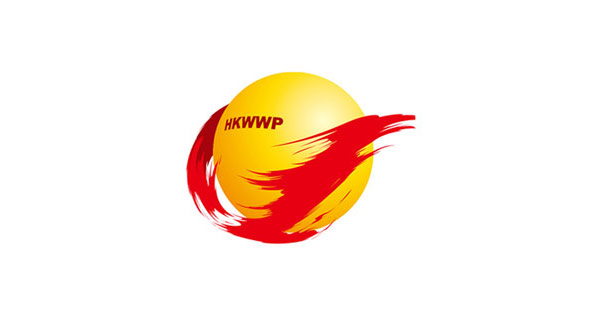 ■港鐵故障後,月台迫滿大量乘客。 資料圖片
■港鐵故障後,月台迫滿大量乘客。 資料圖片【原文】港鐵於10月16日發生歷年最嚴重故障,早上四條路線一起「冧檔」,由於正值上班高峰,引發全城交通極度混亂,對市民造成極大不便。港鐵近年故障頻仍,市民怨聲載道,信號系統老化相信是最主要原因。港鐵必須盡快鎖定故障原因,亡羊補牢,採取包括加快信號系統更新換代等切實措施。政府更需思考有序開放本港公共交通市場,引入適度競爭,促使港鐵改善服務。
當日港鐵荃灣線、觀塘線、港島線、將軍澳線相繼出現問題,情況罕見。由於港鐵佔全港公共交通載客量超過四成,港鐵服務受阻,導致大量乘客被迫轉乘其他交通工具,產生「火燒連環船」效應,巴士、的士,甚至港島電車等服務都不勝負荷。整個上午,全港公共交通幾乎癱瘓。
港鐵強調今次故障情況特別,是有關系統自上世紀90年代營運以來都未發生過,連維修手冊亦無提及。故障的真正原因,要晚上收車後才能做詳細調查。多條線路同時故障,反映港鐵未能充分掌握運作情況,對可能出現的嚴重故障缺乏預見性,以致措手不及。
港鐵近年事故屢見不鮮,觀乎各種故障原因,信號系統故障是最常見的「病因」,而且愈發「病入膏肓」。港鐵多條線路運行多年,尤其是觀塘線、荃灣線,信號系統早已老化,問題頻生,但港鐵更新信號系統進度緩慢,最遲的線路要到2026年才能完成更新,意味着乘客未來幾年仍要忍受頻繁故障的痛苦。當日交通大癱瘓的情況可能隨時會重演,公眾絕對難以接受。
港鐵表示會對當日的故障成立委員會調查,但市民關心的不僅僅是一次事故,而是港鐵故障不斷的背後原因,究竟存在什麼深層的弊病,港鐵有沒有辦法徹底解決。對此,港鐵必須清晰向公眾作出交代。
港人依賴鐵路的程度,遠較其他城市高,港鐵服務理應更可靠、更有效率,方可符合市民的期望。有競爭,才有進步。政府需要考慮加強針對港鐵的競爭性措施,給市民提供更多選擇,將因為港鐵故障而造成香港交通癱瘓的機會減到最低。
首先,鐵路服務本身可由不同的營運商提供服務,觀乎港鐵在內地的北京、深圳、杭州,都有營運部分地鐵線路,本港能否將部分港鐵路線交由外地營運商來經營?有了多個服務提供者,可以通過學習、競爭,互相促進,有利改善港鐵服務,市民也可以通過比較,看到港鐵的服務是否有改善空間。其次是不同公共交通工具之間的競爭,給予巴士、小巴等服務更多市場空間,鼓勵不同交通工具的良性競爭,受惠的是廣大市民。
港鐵故障,一宗都嫌多。政府應當就港鐵管理、本港公共交通政策作深入思考,準確定位,加強對港鐵問責,切忌頭痛醫頭、腳痛醫腳。否則,類似故障恐怕會陸續有來。 (標題為編輯所加) (摘錄自香港文匯報社評 17-10-2018)
MTR should upgrade the signalling system to solve the risk of breakdowns
【譯文】An unprecedented MTR service disruption brought total chaos to the city's traffic on October 16. Commuters were left stranded as four rail lines broke down at the same time during the morning rush hour. The public have worn out of patience as MTR service breakdowns have become more and more frequent in recent years, with ageing signalling systems believed to be the main culprit. The MTR must identify the root cause as soon as possible, and take measures to hasten upgrading of the signalling systems, so as to rectify the current situation. At the same time, the government should consider to open up the local public transport market gradually, so that the MTR's service could be improved under competition.
The scale of the October 16 transport incident is unprecedented, as the Tsuen Wan, Kwun Tong, Island and Tseung Kwan O lines, all broke down nearly at the same time. Accounting for over 40 per cent of Hong Kong's public transport patronage, the MTR is the largest passenger carrying mode in Hong Kong. The MTR service breakdown has forced a substantial number of commuters to suddenly switch to other means of transport, thus causing a chain effect which also brought down bus, taxi and even tram services. Traffic in Hong Kong was well-nigh paralysed on October 16 morning.
The MTR has stressed that the service disruption was so rare and unprecedented that they have never encountered this situation since it came into operation in 1990s, and that even its design and maintenance handbook has not mentioned such a scenario. In-depth investigation for the root-cause did not begin until the end of MTR service hours. The simultaneous breakdown of major rail lines revealed that the MTR did not have full grasp on its operations, and exposed the railway giant's lack of awareness and preparation for major service emergencies.
Service disruptions have become increasingly frequent over recent years, and of all the causes, signalling system failure is the most aggravated and common one. Many of the MTR lines have been in operation for years, especially the Kwun Tong Line and Tsuen Wan Line. Their signalling systems have long been ageing and are very susceptible to failures.
However, the pace of the MTR's signalling system upgrade remains slow, and the last rail line's upgrade will not be completed until 2026. In the coming few years, passengers will still have to endure the pain and frustration brought by frequent breakdowns. The utter chaos on that day could come back to haunt us at any time, and the public cannot accept this.
The MTR said that it would set up a panel to investigate the incident, yet the public is concerned not only with a single incident. The public demand an answer to the frequent breakdowns. What are the underlying causes? Is the MTR capable of resolving the problems once and for all? The MTR must deliver a clear explanation.
To meet the public's expectations, MTR services should have been more reliable and efficient, given that Hong Kong is so much more dependent on its railway networks than other cities. Considering that competition stimulates innovation and progress, the government should introduce measures to bring more choices to commuters. By doing so, the likelihood of a paralysed traffic due to MTR breakdowns could also be minimised.
First, railway services are not bound to be provided by the same operator. Considering how the MTR Corporation operates subway services in Beijing, Shenzhen and Hangzhou, is it possible to let foreign operators run some of Hong Kong's rail lines? With another service provider to learn from and compete against, the MTR would be prompted to step up the quality of its service.
At the same time, any room for improvement in MTR services would become more apparent to the public's eye through comparison. Second, the MTR's competition with other modes of public transport should be encouraged. By opening up market space for buses and minibuses, commuters could benefit from the healthy competition created between different transport means.
MTR breakdowns must not be tolerated. The government should review the current public transport policies and step up supervision on the MTR. Superficial measures must be avoided. Otherwise, similar incidents may come one after another.■Jeffrey Tse (ywc_jeffrey@hotmail.com)
Exercise
1. 營運商
2. 根本原因
3. 連鎖效應
4. 幾乎
5. 通勤者
Answer
1. operator
2. root cause
3. chain effect
4. well-nigh
5. commuter

